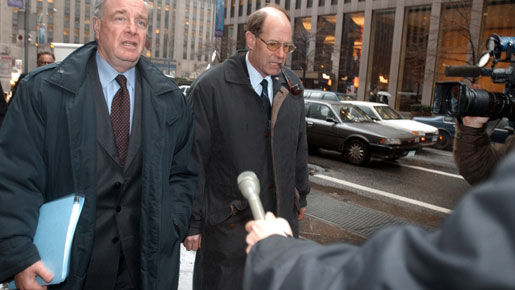
Canada’s schedule A banks have enjoyed a close working relationship with their regulators, maintaining an open and constructive dialogue that is the envy of other countries.
As well as this, Canada is the sixth largest exporter of crude oil globally (and the largest crude exporter to the US), some of the most innovative technologies on the planet – and in space – are Canadian designed and built, that Canada’s banking sector came through the recent global financial crisis with some of the strongest balance sheets in the industry, and that the largest non-domestic bank in the Chinese foreign exchange market is Canadian.
Small wonder, then, that the Canadian dollar, traditionally seen as the poor cousin to the US greenback, is suddenly close to parity and looks set to stay there indefinitely. “Fundamentally, I think it should actually be stronger,” says Firas Askari, Managing Director of Foreign Exchange Trading, BMO Capital Markets. “If you look at Canada compared to the other G8 nations, we have a better fiscal policy, more conservative banking standards, and, according to statistics issued by the bank just recently, for the first time Canadians are measurably wealthier than our US partners.”
Of course, the magnitude of the US market on Canada’s doorstep cannot be underestimated, but its importance is drifting downwards. Over the last ten years, the percentage of Canadian exports to the US has declined from 85 to 75 percent of the total, with exports to fast-growing economies like India and China growing exponentially. All of this adds up to a desirable currency on global foreign exchange markets – the Canadian dollar fluctuates between fifth and seventh most significant currency based on daily transaction size.
Askari has reason to be pleased about that. At 192 years, BMO (Bank of Montreal) is Canada’s oldest bank, and its Capital Markets Foreign Exchange Group has been winning awards lately, including the 2010 Best Foreign Exchange Bank, Canada & North America award – from European CEO Magazine.
When public opinion and government ire came down hard on the banking sector following the recent global financial crisis, foreign exchange operations were not exempted from the regulators’ examination despite the fact that it was actually foreign exchange that served as a source of funding when most others were drying up. Draft US legislation may be looking to force certain swap transactions through a central clearer like other commodities, and the Basel 3 accord in Europe looks set to raise tier one capital ratios to ensure balance sheet stability.
But according to Askari, Canadian banks will have the smallest leap to make to meet these new restrictions, because the world’s regulators “have just been initiating things that we’ve seen as the best course of business anyway.” The traditionally conservative banking culture in Canada, although a source of frustration to some investment bankers wanting to do quick deals, has seen the banks maintain higher tier one capital ratios that even the regulators stipulate. Being a relatively small community, Canada’s schedule A banks have enjoyed a close working relationship with their regulators, maintaining an open and constructive dialogue that is the envy of other countries.
But they still have to be competitive in global markets, and in the world of foreign exchange this can be particularly challenging. “Most of the transactions in foreign exchange are relatively short-dated, which automatically reduces risk” Askari explains. “There is also a very high level of global transparency. Everyone with access to the internet can tell where the Canadian dollar is trading, which makes it very hard to differentiate your operations just on rates.”
Although technological advances and, in particular, algorithmic trading have enabled rapid swaps and arbitrage deals by profiteers, Askari does not see this as a sustainable strategy. “Algorithmic trading has definitely changed the marketscape,” he comments. “It probably adds liquidity, but at the end of the day it’s the real flows from corporates and institutions needing to execute that is deciding the market’s direction.”
It is these corporates and institutions, drawn from three specific regions that form the bulk of BMO Capital Markets’ foreign exchange clients. The bank gained a significant footprint in the US through its acquisition of Chicago-based Harris Bank in 1984 and is the second oldest non-domestic bank in the UK. BMO also has a strong presence in China, where it did its first foreign exchange deal over 100 years ago. “What we manage to do is bridge our international customers to North American markets, as well as take our Canadian and US customers to the markets in London and Asia,” Askari notes.
The key is to wrap yourself in your customers, he says, pointing out that less than 50 percent of the foreign exchange flows out of their London and Chicago operations are in Canadian dollars. “We leverage our expertise, which is obviously in North America. We’ve got 30 professionals in Toronto and a total of 87 globally. I have deliberately hired people with many years experience in the markets. Knowledge builds business and leading expertise brings business in the door.”
So does innovation, and Askari makes a point of embedding himself in the rest of the bank, partnering with its non-foreign exchange product lines such as mergers and acquisitions in a meaningful and sustainable way. “Foreign exchange is an ancillary business,” he observes, “so you definitely need to build on everything the bank has.”
And the future looks good. With global commodity prices rising and the recent banking crisis forcing investors to re-examine what they consider to be safe havens, there is renewed interest in the Canadian dollar from rapidly growing economies in the Far East and South America. Not one for complacency, Askari permits himself a moment of optimism. “There’s a transparency and a respect for the Canadian way of doing things that is becoming very attractive in the markets,” he smiles.

